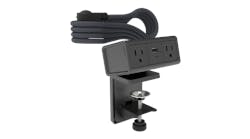A clean, healthy and safe school provides students, faculty and staff with an environment conducive to learning and working. However, budget and staff reductions can lead to substandard cleaning practices and unsanitary conditions. Some school facility managers have been making the switch to a day-cleaning schedule to reduce security and energy costs, and increase worker productivity. Scheduling cleaning during the day — when students, faculty and staff are present — also can improve communication among occupants and cleaning staff.
Day cleaning has many benefits, but the transition from night to day brings some challenges — especially floor care. Some floor-care methods are difficult to incorporate into a day-cleaning schedule because they are labor-intensive and can be disruptive.
Facility managers who are serious about day cleaning will find that, with the selection of the right type of floor equipment and careful scheduling, a daytime floor-care program can succeed.
Floor-care obstacles
Cleaning a floor — the washing, drying and mopping — is not where the challenges of floor care lie. The challenges come from the obstacles some floor-care machines present and the hours of labor required from the cleaning staff.
Many floor-care machines have electrical cords that trail across floors and hallways, creating trip hazards for workers and others in the building. Cords also restrict the distance of cleaning paths in large spaces and require custodians to stop, unplug machines, search for outlets and begin again. Facility managers switching to day cleaning might want to consider battery-powered machines that enable workers to clean more efficiently. Purchasing new equipment will require upfront spending, but the payback will come in labor savings and fewer accidents.
Noise is another important consideration in selecting floor machines. Some machines can be loud and distracting. Machines marketed as “quiet operation” are available for sensitive environments and would fit well in a day-cleaning operation.
In addition to the challenges caused by equipment, the floor-care process itself requires careful planning and considerable time. Many schools are occupied throughout the day and into the evening, so maintenance workers have to find blocks of time for cleaning in between activities and events.
Floors need to be dry and free of obstacles and general foot traffic in order to prevent slips and falls. Facility managers need to make sure to set aside enough time for not only floor cleaning, but also drying. To speed up drying, scrubber/dryers help dry the floor at a faster rate than traditional machines. Floors and wet areas should be blocked off to building occupants until the surface is dry.
Facility-wide involvement
Facility managers should share their knowledge of equipment and scheduling with key department contacts and building users within a school or campus. Anyone who might be affected by schedule changes should be notified.
A good way to make initial contact is by organizing a meeting to explain the benefits of day cleaning with administrators, teachers and custodial staff. Managers should encourage attendees to ask questions and voice concerns. Future meetings should include discussion regarding scheduling, including daily occurrences, upcoming special events, activities and areas that require special care. If all parties are aware of each department's activities, disruptions are less likely.
Armed with important scheduling information, facility managers can best decide how to adjust the workload for the cleaning staff. Managers should take into account hard-floor square footage, type of surface and the number of workers required for cleaning the area in the scheduled amount of time.
Next, managers should create a floor-care hour-by-hour schedule that complements the needs of their staff and facility. The schedule should work around regularly scheduled activities, such as lunch, gym periods and classroom hours. In a university setting, classroom usage can vary a little more day-to-day because a class typically doesn't meet every day. Some classrooms are in use every day, but others may be used only once or twice a week.
Knowing this, cleaning managers should develop a plan that best fits the academic schedule. However, it is important that managers pay attention to the proximity of other classrooms or quiet areas when forming a cleaning schedule so as not to distract anyone. Some high-use public areas and classrooms may be available for cleaning only before the building opens or just after the day's activities end.
By involving many people in creating a new floor-care plan, everyone can work together to create a more positive learning environment.
Hidden savings
Daytime floor care encourages communication among facility staff and occupants, and it saves the organization money in security and energy costs.
Many education facilities do not shut down until late in the evening. Schools and universities often remain open for after-school programs, night classes, sports and community events. In the case of a traditional night-cleaning operation, custodians do not start cleaning until all activities are finished for the day. During this late-night cleaning, lights and heating or air-conditioning systems remain in use, and sometimes security staff stay on the clock as well.
Operating the lights, machinery and other building systems into the night means facilities are using energy and electricity nearly 24/7. A day-cleaning operation enables schools to shut down buildings shortly after all occupants have left; cleaning resumes early the next day when the building opens.
It might be necessary to have one or two custodians on duty until activities are finished in case of trash overflow, spills or tear-down of tables and chairs.
If custodians aren't cleaning throughout the night, security staff no longer is needed for those hours. So, by cleaning the floors during the day, education facilities can save thousands of dollars in electricity and security costs.
Jurecki is vice president for Cimex-USA, Tallmadge, Ohio.
NOTABLE
$46.30
National median dollars per K-12 student spent on custodial/maintenance equipment and supplies.
$35.00
Median amount per student for all colleges spent on custodial/maintenance equipment and supplies.
15
National mean number of full-time custodial and maintenance personnel at school districts.
Source: AS&U's M&O Cost Studies, April 2006

